The Ministry of Economic Affairs yesterday announced the government’s finalized feed-in tariff (FIT) for renewable energy, with the outcome showing milder pricing cuts than previously proposed.
The cap on the FIT for offshore wind energy over the next 20 years is set at NT$5.516 per kilowatt-hour (kWh), representing a 5.71 percent cut from last year’s NT$5.8498, as opposed to the much steeper 12.71 percent cut to NT$5.106 first proposed in November last year.
The new FIT pricing takes into account concerns voiced by offshore wind developers, who have said that a steep reduction would threaten the viability of projects, while pundits have questioned the perceived generosity of the government’s renewable energy purchasing price, Bureau of Energy Director-General Lin Chuan-neng (林全能) said at a news conference in Taipei.
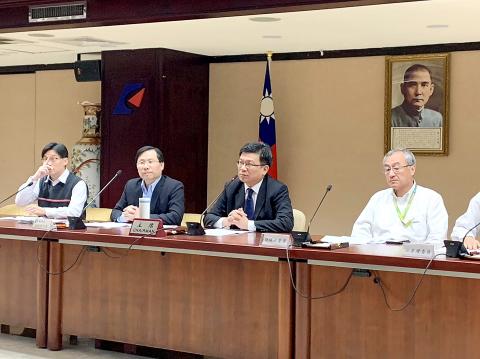
Photo: Lin Ching-hua, Taipei Times
Following negotiations with developers, the renewable energy review committee acknowledged that offshore wind projects are more costly to build in Taiwan and must be supported with higher rates, Lin said.
Taiwan’s rougher seas permit fewer construction days, while the nation’s coastal ocean floors require more costly underwater jacket structures, he said.
Offshore wind developers in Taiwan have absorbed additional expenses not found in projects in other markets, such as conducting the initial survey and project evaluation and upgrading power grids, as well as offering incentives to affected fishers, Lin said.
While the government has agreed not to cancel a tiered FIT scheme in which energy purchases are higher over the first 10 years before tapering off in the next decade, the rate has been changed from 7-3 to 6-4.
The revised rate would ensure that offshore wind developers are committed to project operations for a minimum of 10 years and address the requirements of project financiers, Lin said.
The updated terms also raised the cap on offshore energy procurement from 3,600kWh to 3,750kWh to encourage the adoption of newer and bigger 8 megawatt (MW) turbines, instead of 4MW variants.
The government turned down developers’ request to forgo an annual cap on offshore wind energy procurement, Lin said, adding that the FIT rate would fall by 25 percent to NT$4.137 when output exceeds 4,200kWh and a further 50 percent to NT$2.758 beyond 4,500kWh.
“We will not extend a bigger reward to developers simply because the winds were more favorable in a certain year,” Lin said.
The latest FIT scheme does not include the additional cost burden of local content requirements, as local supply chain partners would get up to speed and become cost efficient with time, he added.
Lin said he is optimistic that the central government and the Changhua County Government can resolve an impasse that has prevented some developers from receiving project permits.
“We should be getting a definitive answer in the next two days,” Lin said, adding that the county government stated in an official letter to the bureau that it does not have the authority to approve projects.
The government stands behind its new FIT pricing, Deputy Minister of Economic Affairs Tseng Wen-sheng (曾文生) said, adding that the public can check how the rate was derived.
“The government remains committed to offshore wind energy and we urge developers to not give up on projects easily,” Tseng said.
The FIT rate for solar power and other renewable energy sources also saw lower reductions. Solar energy has a new biannual rate with a maximum reduction of 6.15 percent for the first half of the year and a maximum of 7.78 percent for the second half, compared with a 12.15 percent cut proposed before.
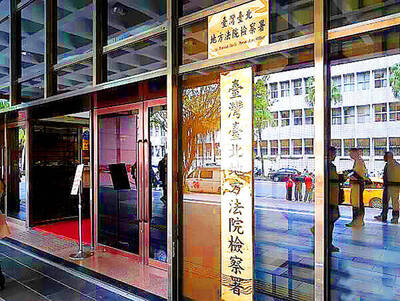
INVESTIGATION: The case is the latest instance of a DPP figure being implicated in an espionage network accused of allegedly leaking information to Chinese intelligence Democratic Progressive Party (DPP) member Ho Jen-chieh (何仁傑) was detained and held incommunicado yesterday on suspicion of spying for China during his tenure as assistant to then-minister of foreign affairs Joseph Wu (吳釗燮). The Taipei District Prosecutors’ Office said Ho was implicated during its investigation into alleged spying activities by former Presidential Office consultant Wu Shang-yu (吳尚雨). Prosecutors said there is reason to believe Ho breached the National Security Act (國家安全法) by leaking classified Ministry of Foreign Affairs information to Chinese intelligence. Following interrogation, prosecutors petitioned the Taipei District Court to detain Ho, citing concerns over potential collusion or tampering of evidence. The
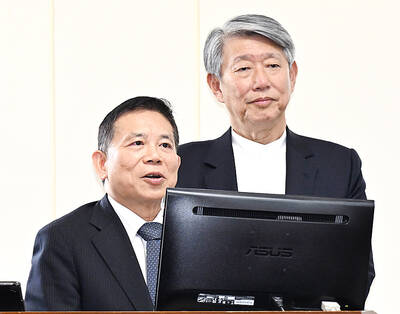
NEGOTIATIONS: Taiwan has good relations with Washington and the outlook for the negotiations looks promising, Minister of Economic Affairs J.W. Kuo said Taiwan’s GDP growth this year is expected to decrease by 0.43 to 1.61 percentage points due to the effects of US tariffs, National Development Council (NDC) Minister Paul Liu (劉鏡清) said at a meeting of the legislature’s Economics Committee in Taipei yesterday, citing a preliminary estimate by a private research institution. Taiwan’s economy would be significantly affected by the 32 percent “reciprocal” tariffs slapped by the US, which took effect yesterday, Liu said, adding that GDP growth could fall below 3 percent and potentially even dip below 2 percent to 1.53 percent this year. The council has commissioned another institution
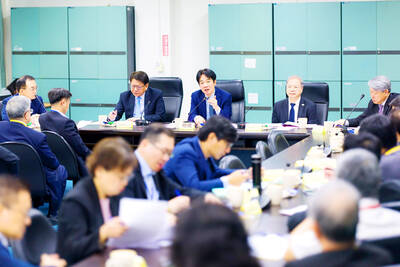
NEGOTIATIONS: The US response to the countermeasures and plans Taiwan presented has been positive, including boosting procurement and investment, the president said Taiwan is included in the first group for trade negotiations with the US, President William Lai (賴清德) said yesterday, as he seeks to shield Taiwanese exporters from a 32 percent tariff. In Washington, US Trade Representative Jamieson Greer said in an interview on Fox News on Thursday that he would speak to his Taiwanese and Israeli counterparts yesterday about tariffs after holding a long discussion with the Vietnamese earlier. US President Donald Trump on Wednesday postponed punishing levies on multiple trade partners, including Taiwan, for three months after trillions of US dollars were wiped off global markets. He has maintained a 10 percent
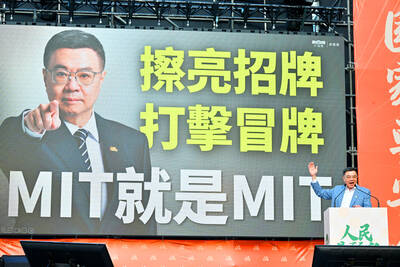
TRADE: The premier pledged safeguards on ‘Made in Taiwan’ labeling, anti-dumping measures and stricter export controls to strengthen its position in trade talks Products labeled “made in Taiwan” must be genuinely made in Taiwan, Premier Cho Jung-tai (卓榮泰) said yesterday, vowing to enforce strict safeguards against “origin laundering” and initiate anti-dumping investigations to prevent China dumping its products in Taiwan. Cho made the remarks in a discussion session with representatives from industries in Kaohsiung. In response to the US government’s recent announcement of “reciprocal” tariffs on its trading partners, President William Lai (賴清德) and Cho last week began a series of consultations with industry leaders nationwide to gather feedback and address concerns. Taiwanese and US officials held a videoconference on Friday evening to discuss the